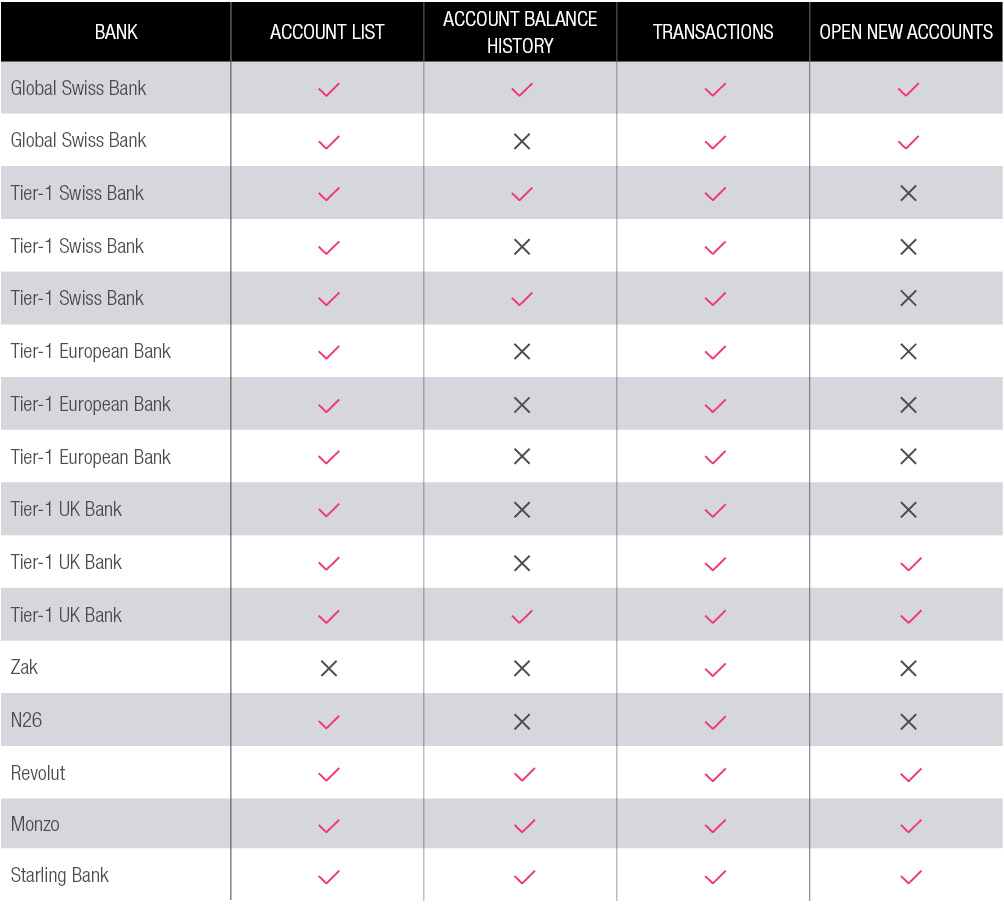Building upon the success of Benchmarking Mobile Banking in Switzerland Today, Capco Digital is following up with several deep-dive blogs on selected topics from the survey.
In this article, we highlight the most-used features and customer use case in mobile banking today: viewing accounts with their balance as well as the corresponding transactions – all which commonly fall under the umbrella term of ‘asset overview’.
Offering an asset overview seems to be a simple task. It requires finding out how much money customers have, and yet it poses many complex questions that can have significant cost implications to banks. We know from our clients that between 30-60 percent of all call center queries are related to account balance enquiries. Even though most banking apps provide this basic functionality, they don’t cover the whole spectrum.
BROADER FUNCTIONALITY: CUSTOMERS WANT TO UNDERSTAND THEIR BALANCE, NOT JUST SEE IT
Based upon our observations from working with global retail banks and Capco’s ‘global MVP’, a minimum set of desired functionalities, we believe the following core functionalities are mandatory in a mobile banking app today:
- Display of accounts and corresponding balance: the simplest feature, displaying the total balance of each account that a customer has. The average retail customer has one account and his balance should be presented.
- Display a balance history: deeper insights are generated by providing a historic log of an account balance. This can be achieved visually, through a chart or through a list displaying the balance time series data – often in conjunction with transactions.
- Display transactions: viewing and interacting with transactions is a common feature. Yet, this functionality often lacks in range. Best in class offerings allow interacting with transactions and their enriched data such as location and merchant information or even creating new payments based on previous transactions. Unfortunately, poor transaction data results in a frustrating customer experience with no insightful or usable information for the user.
- Provisioning of new products: the asset overview is most likely the one place where customers look for the option to create a new account or order a new card. However, product opening functionalities are seldom provided as part of the asset overview or hidden in a setting with limited scope. This simple cross-selling opportunity is best used when it’s provided in-context - while customers are viewing their account balances and transactions.
CHALLENGES: A BALANCE IS NOT A BALANCE
From our implementations across the Americas, Europe and Asia, there tend to be some common problems that emerge…
- Banks have different balances in use: core banking systems often maintain multiple account balances, such as an end-of-day value, an intraday value, a balance with
cleared transactions and one with uncleared (but executed) transactions. It is best to provide the most up-to-date, realistic representation of the customers’ available funds, which is an intra-day balance that includes uncleared transactions.
- Transaction data is poor: again, relying on core banking systems and payment processors, transaction-level data is often poor and complex for laymen to understand. Performing the right analytics, enrichment and data management is a major challenge not easily solved within a legacy data environment. The creation of an abstracted data integration layer that consolidates, transforms and enriches the data is crucial.
- Consolidations and aggregations don’t make sense: in customer journey workshops, we often see the idea of consolidating bank balances to provide a ‘holistic view’ of a client’s assets. This goes further when banks try to include liabilities such as loans or mortgages into the picture, too. Apps are filled with pie charts, waterfall charts or simply unreadable balances (your checking account is nullified by a six-figure mortgage liability). In this case, displaying accounts individually is the best course. Interpreting data for the user is dangerous and better integrated into a personal finance management (PFM) view, as users mostly don’t understand how the aggregation of balances is done.
CAPCO SWITZERLAND 2019 RANKINGS
We studied 16 traditional and challenger banks across Europe and Switzerland and evaluated them against the above-mentioned functionalities. Our results show that most banks already cover the basics and the gap to challenger banks is not very large.

OUR RECOMMENDATION
Based on our study and experiences with clients, we believe that despite the asset overview being an essential part of a
mobile app, it should not take up too much of development capacity. Banks should leave more insightful visualizations and data interpretations to the PFM functionality. Also, instead of overcomplicating the asset overview, investments in innovative and differentiating features are more valuable.
AUTHORS
Robin Heiler, Senior Consultant
Thierry Grosch, Consultant
CONTACT
Nils Reimelt, Managing Principal
M +41 79 135 85 22
E nils.reimelt@capco.com